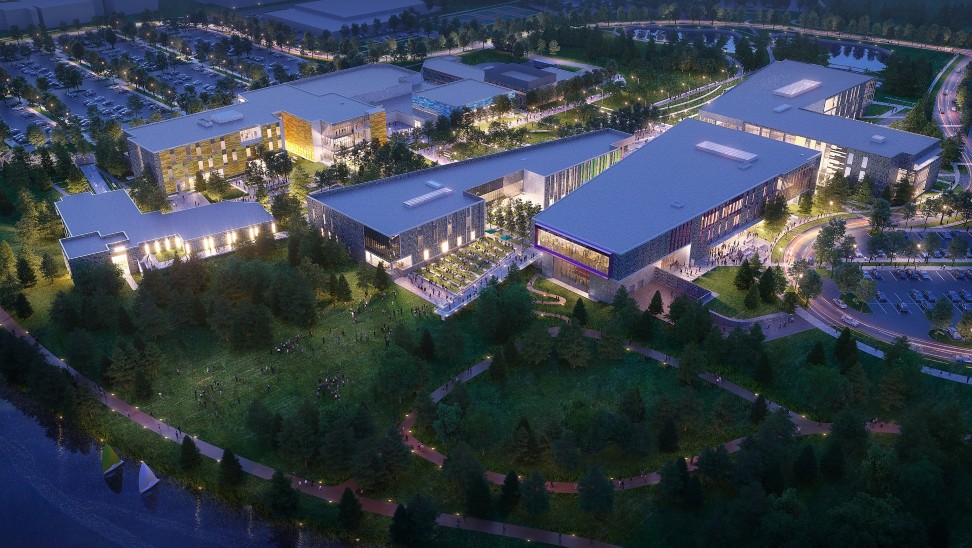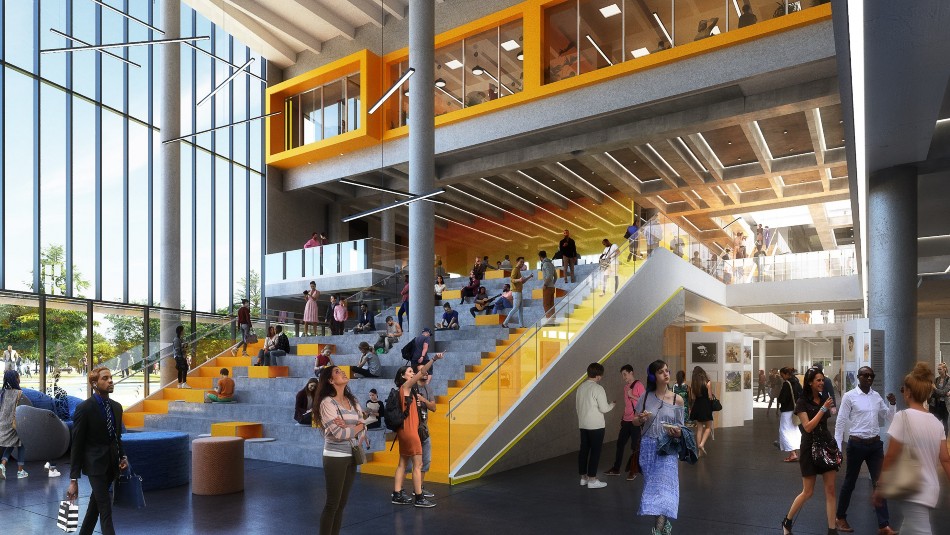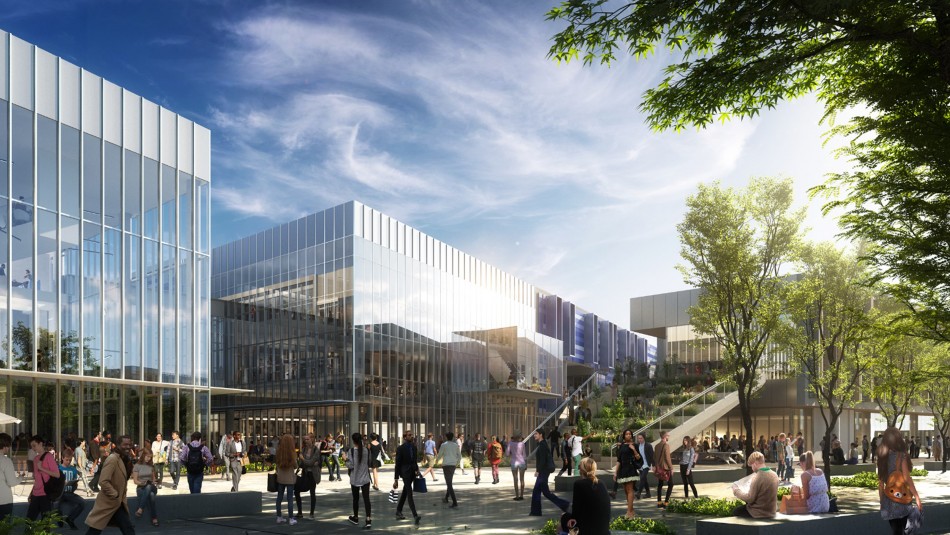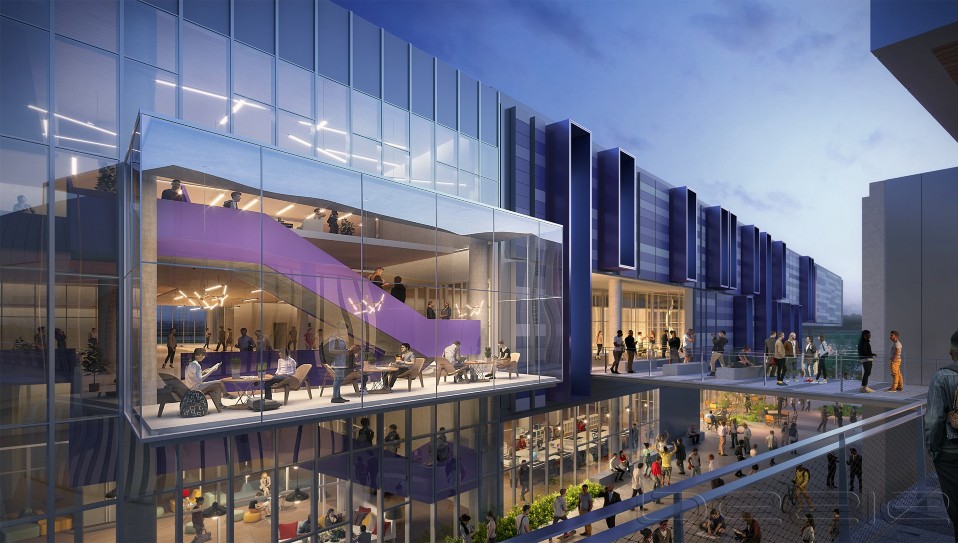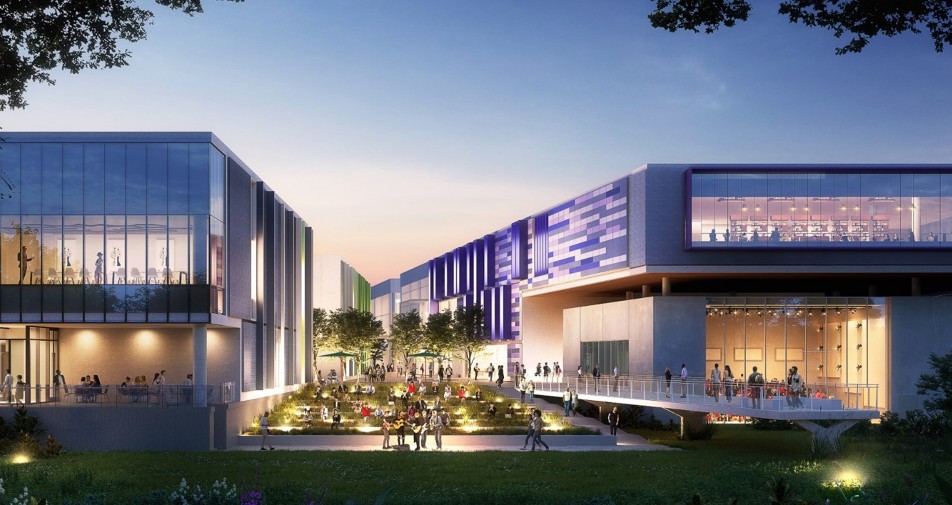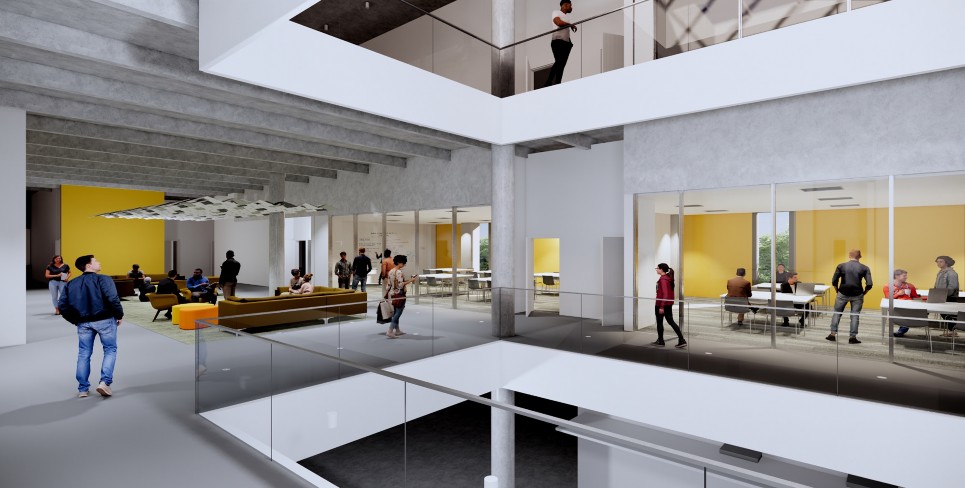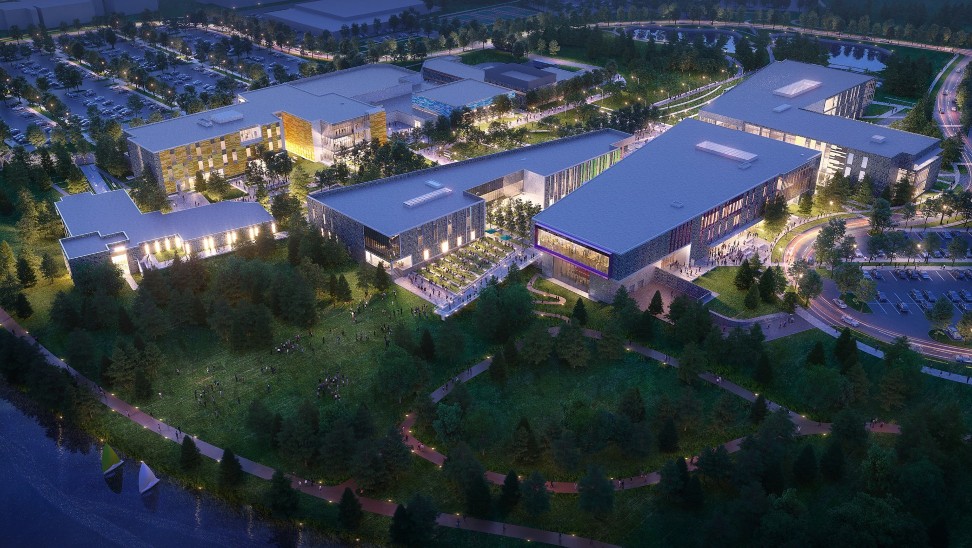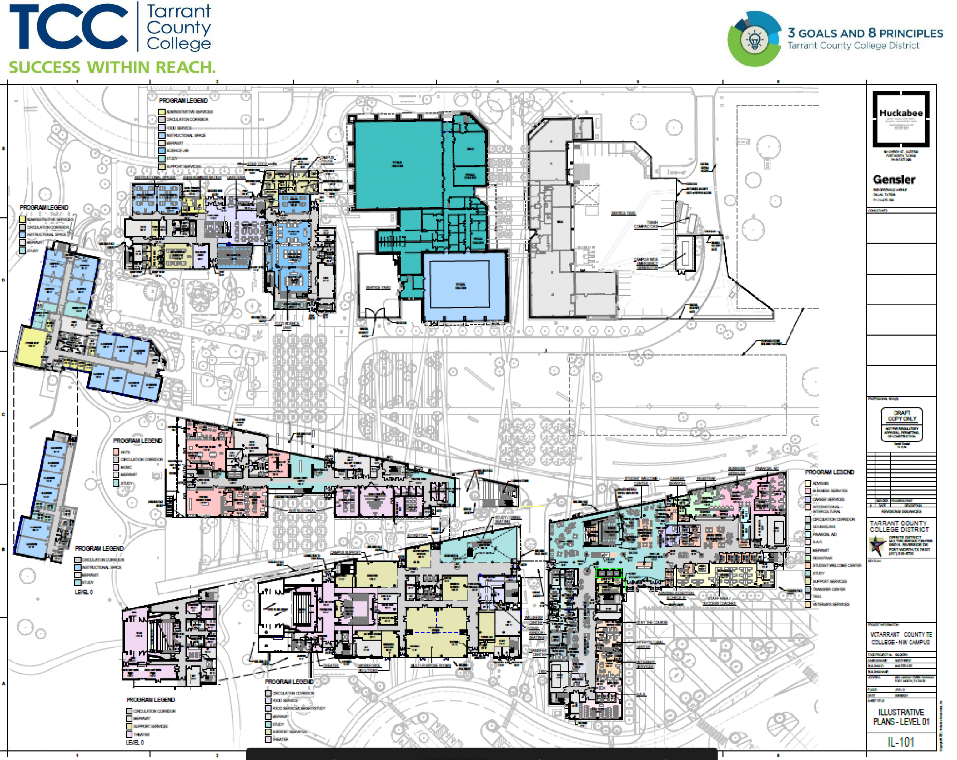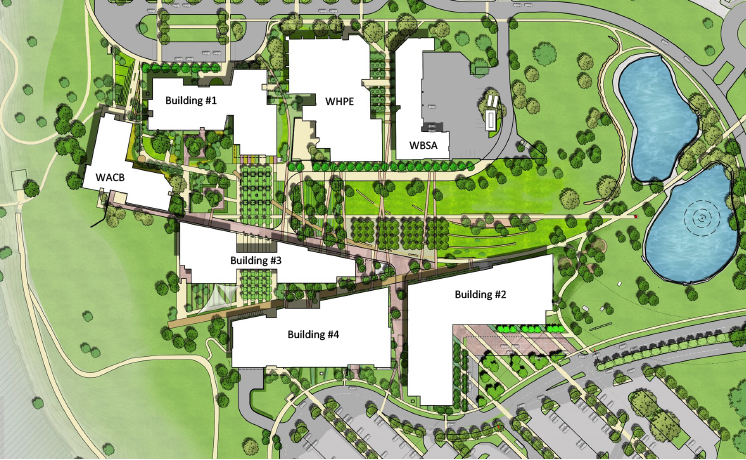The redevelopment of TCC Northwest took a big step forward June 17 when the Board of Trustees unanimously approved a $105 million contract with Skanska USA for construction of the first two of four new buildings that will constitute the core of the campus. The total project, budgeted at $320 million, is part of the $825 million bond program authorized by the voters of Tarrant County in 2019.
Campus President Zarina Blankenbaker is happy to see the months of research and planning about to bear fruit. “As we review the current illustrative plans for the Northwest redevelopment, we are seeing the outcomes of the innovative process that TCC has undertaken,” she said. “The elements that make up each building have been informed by the work of the eight Principle Advisory Panels. From formal to informal student learning spaces, faculty and staff neighborhoods, Learning Commons and the student welcome center – this vision of TCC Northwest is modern, flexible, accessible and most importantly, student-ready.”
And it’ll be pretty darned good-looking, too.
“When I look at the renderings, I am excited about the amazing experience our students, faculty and staff are going to have,” Blankenbaker said. “I also think about the process we have used to get us to this point and how this process paves the way for future projects such as this. We are not just building TCC Northwest, we are building for the future of Tarrant County College and the community we serve.”
A week prior to board approval, Blankenbaker and her executive team were briefed by Michael Ufer, senior associate at the Gensler design firm. And while the architectural renderings shown below may indeed be heavenly, the devil, as always, is in the details, and that’s what Blankenbaker and her team addressed.
The presentation included a building-by-building, floor-by-floor look at what (and who) will be where when the $320 million project is completed in late 2025, and the questions were similarly granular. Is this space large enough for this function? How many desks will this room hold? Where will this office be in relation to that one? How many electrical outlets and data ports are in this area?
The site plan, also pictured below, shows that all to remain from the prior campus core will be WACB, WHPE and WBSA, which houses the maintenance and physical plant functions. These will be “re-skinned,” given new exteriors so as to blend with the four new buildings, which now carry the admittedly prosaic names Buildings 1, 2, 3 and 4.
Building 1 will be on the northwest corner of the core campus, midway between WACB and WHPE. Its three levels will contain the early college high school as well as science labs. Building 3 will be to the southeast of WACB with a parklike plaza to the north reaching to Building 1. It will be on two levels and will house art, music and general-purpose classrooms
Building 4 will be to the south of Building 3 with the two connected by an enclosed bridge on the second level. The Learning Commons will be here and will retain its view of Marine Creek Lake. Also in Building 4 will be the bookstore, food services and a multipurpose center.
Building 2, extending east and north of Building 4 with another enclosed bridge linking them, will have most of the student development services functions, a large student gathering atrium with a spectacular “learning stair.” Other student services will be on the second level, as will testing areas and faculty spaces. Administrative offices and more faculty space take up the third level along with general classrooms.
Construction will begin on Buildings 1 and 2 during the summer of 2021 and are due to be completed in late 2023 in time to be used as swing space for the demolition to clear space for Buildings 3 and 4.
To the north of the core campus, the police and fire training facilities will be unchanged, the early college high school’s modular buildings be removed and WATB, which once house the aviation program, will be reviewed for demolition or replacement.
The process is a long one, and there will be many more meetings during which devilish details are sure to pop up. But Blankenbaker and her team are secure in the knowledge that, thanks to the meticulous planning process grounded in the Three Goals and Eight Principles, such issues will be at a minimum.

